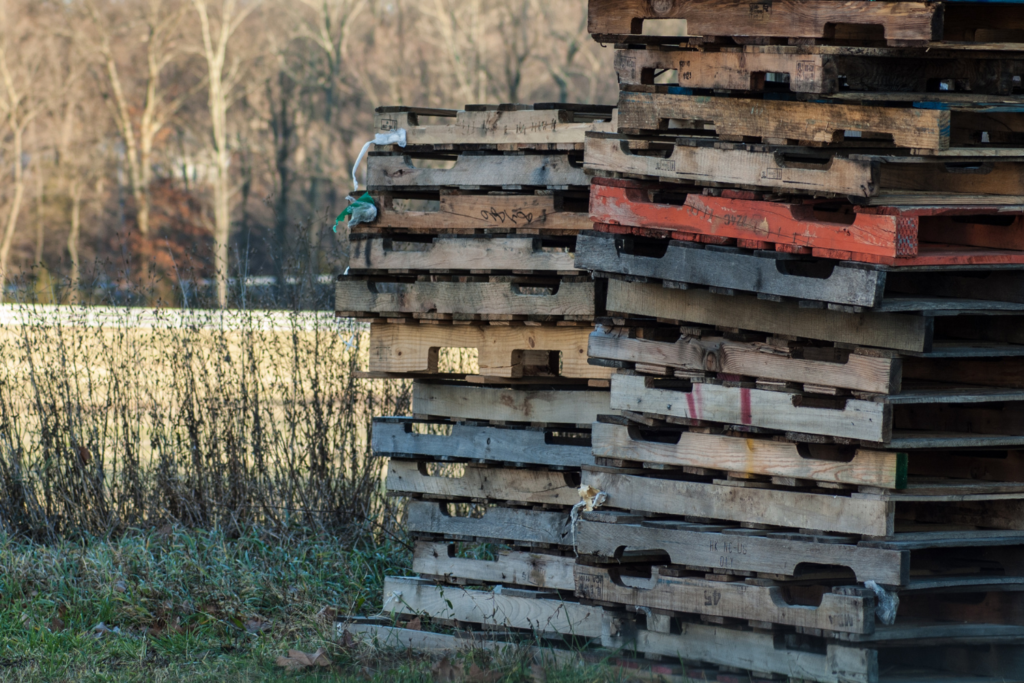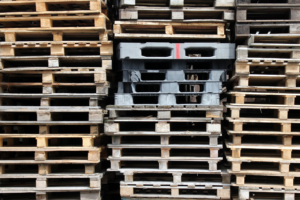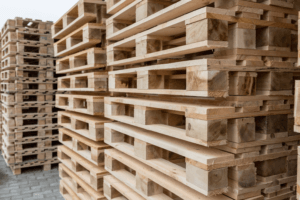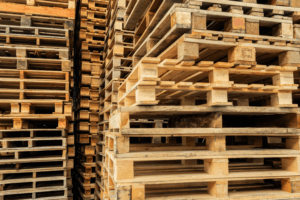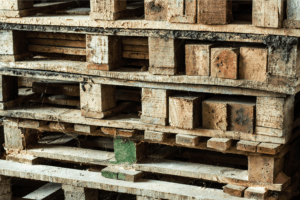Frequent use and heavy loads can cause pallets to break or weaken over time.
While discarding damaged ones and purchasing new ones may seem like the quickest solution, repairing them is a far more beneficial and sustainable approach.
In this broken pallet repair guide, you will learn how you can make your old pallets sturdy again.
Let us begin.
Broken Pallet Repair Guide and Complete Process
Repairing broken pallets instead of throwing them away offers both financial and environmental advantages, making it a smarter choice for you and the planet.
It is much cheaper than buying new ones. You can save on replacement costs if you extend their lifespan through repair.
It also reduces waste and minimizes the need for new timber, helping to lower deforestation and carbon emissions.
Below is the broken pallet repair guide.
1. Wear Protective Gear to Avoid Injuries From Splinters or Nails
Pallets often have rough, splintered wood or exposed nails, which pose risks of cuts, punctures, or other injuries.
You should wear protective gear such as heavy-duty gloves, safety glasses, and steel-toed boots to avoid harm.
Take these precautions to minimize the risk of accidents during the repair process.
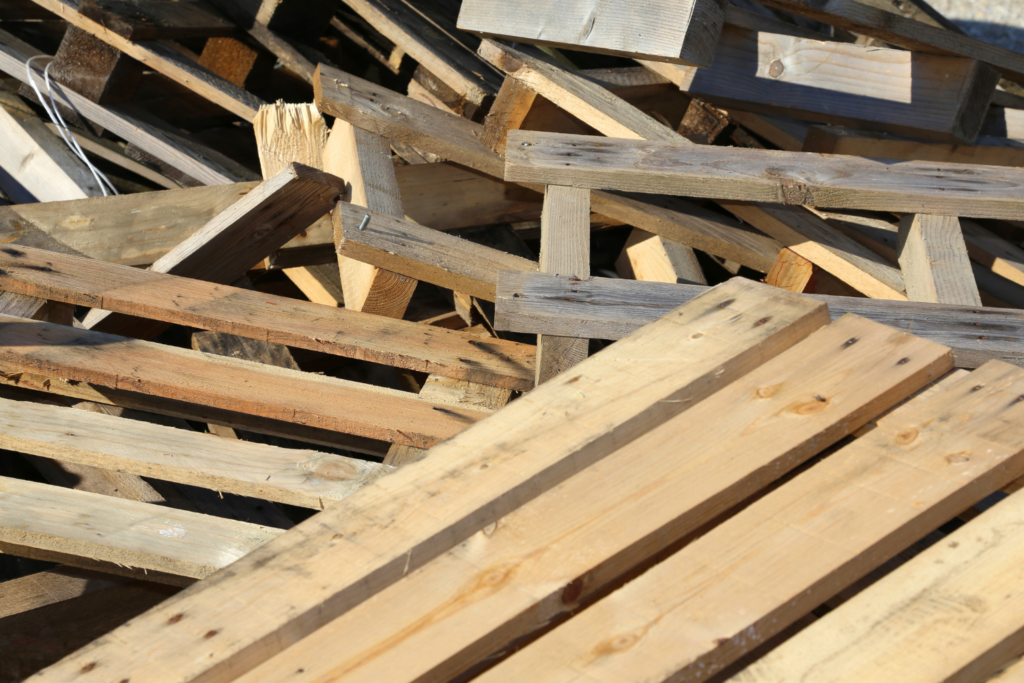
2. Check for Broken or Cracked Boards, Loose Nails, and Overall Structure
Inspect the pallet thoroughly to identify all potential damages. Look for broken or cracked boards, loose or protruding nails, and any structural weakness in the frame.
This comprehensive assessment helps in determining the repair needs and ensuring all issues are addressed effectively.
Missing any hidden defects can result in an unstable pallet, potentially leading to accidents or damage to goods during transport.
3. Gather the Materials and Tools That Will Be Used for Repair
Gathering all necessary materials and tools before starting pallet repair is a critical preparatory step that enhances the overall effectiveness of the repair process.
Below are some tools you can use to repair broken pallets.
Replacement Boards
Replacement boards are used to replace broken or missing parts of the pallet. The key is to select boards that match the dimensions and wood type of the original pallet.
Nails or Screws
Nails and screws are the fasteners that hold the pallet together.
Nails are often used for their ease and speed of application, especially with a nail gun.
However, screws provide a stronger and more secure hold, making them preferable for heavier loads or for pallets that will be handled frequently.
When using screws, it is important to choose the right size and type to avoid splitting the wood and to ensure a tight fit.
Hammer or Nail Gun
The hammer is a versatile manual tool used to drive nails into the wood, remove old nails, and fit boards securely. It is essential for basic pallet repair tasks.
A nail gun, on the other hand, significantly speeds up the process and reduces the physical effort required.
They provide a consistent and precise application of nails, which is especially useful when repairing multiple pallets or when you need to work quickly.
Crowbar
A crowbar is invaluable for dismantling damaged pallets. It allows you to pry off broken boards and remove old nails or screws.
It separates the wood without causing additional damage to the pallet.
Saw
A saw is used to cut replacement boards to the exact size needed for the repair. This ensures that the new boards fit perfectly into the existing structure of the pallet.
There are different types of saws. Use hand saws for simple cuts or power saws for more precise and faster cutting.
Sandpaper
Sandpaper is used to smooth the edges of the cut replacement boards. This is an important step to prevent splinters and to ensure that the pallet is safe to handle.
It also helps in fitting the boards snugly without gaps and provides a finished look, which helps in maintaining the overall quality of the pallet.
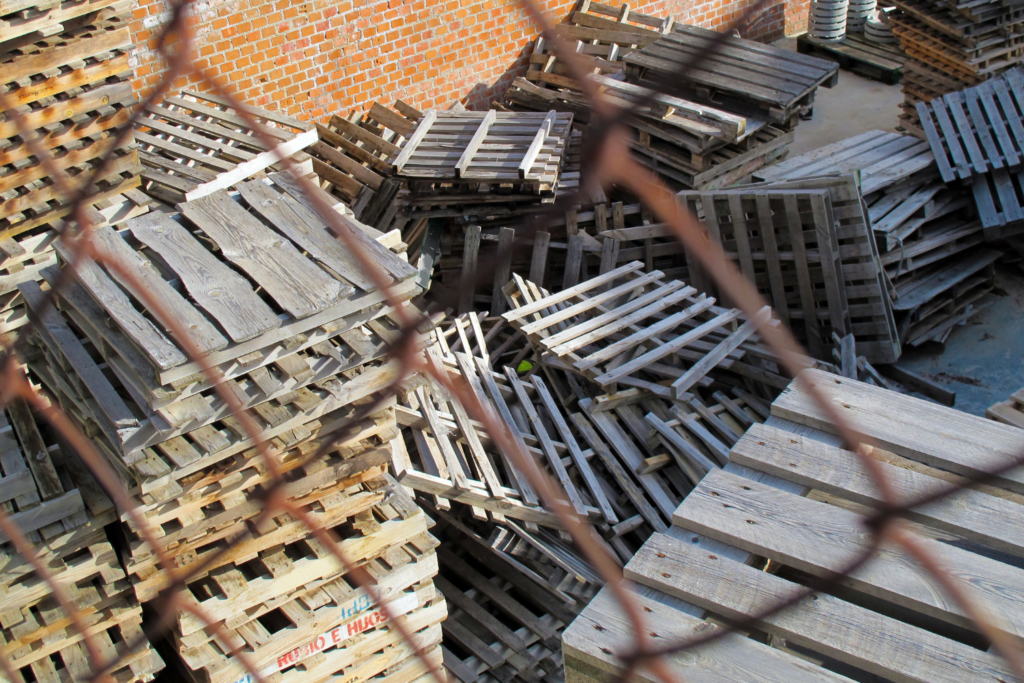
4. Use a Crowbar to Pry Out the Broken or Damaged Boards Carefully
Once prepared, carefully use a crowbar to remove damaged boards. Pry them out slowly to avoid causing additional damage to the surrounding boards or the pallet’s structure.
This step requires patience and a steady hand. If you try to remove boards hastily, it can lead to splintered wood or structural weakening.
5. Measure the Length and Width of the Damaged Boards and Cut the Replacement Boards to the Same Size Using a Saw
Measure the damaged boards’ length and width to ensure the replacement boards fit perfectly. A correctly sized replacement maintains the pallet’s original stability.
Use a saw to cut the new boards to the exact dimensions, taking care to match thickness and strength. A proper fit reduces the risk of uneven weight distribution.
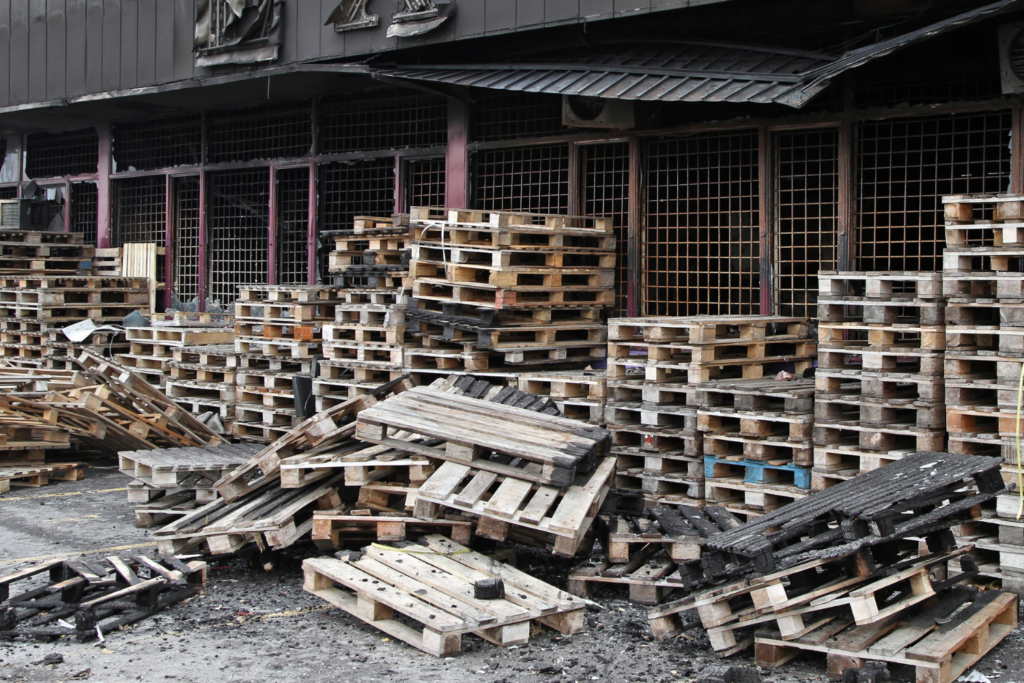
6. Secure the New Boards with Nails or Screws Using a Hammer or Nail Gun
Attach the replacement boards securely using nails or screws.
If using a hammer, drive nails firmly to avoid looseness; if using a nail gun, apply even pressure to achieve a strong bond.
7. Hammer Down Any Loose Nails or Replace Them with Screws
Use a hammer to drive any protruding nails back into place. If nails are severely loose, consider replacing them with screws, which offer a more reliable hold.
8. Use Sandpaper to Smooth Any Rough Edges on the Replacement Boards
After attaching the replacement boards, use sandpaper to smooth rough edges.
This step not only improves the pallet’s appearance but also reduces the risk of splinters.
It ensures the safety of workers handling the pallet and prevents potential damage to goods that could be caused by rough or sharp edges.

9. Ensure All Repairs Are Solid and the Pallet Is Safe to Use
Check the newly attached boards for stability, ensure that nails or screws are securely in place, and look for any remaining structural weaknesses.
Shake or lightly press on the pallet to test its strength and confirm that all repairs are solid.
Conclusion
Repairing broken pallets instead of discarding them enables you to achieve substantial cost savings by reducing the need for frequent pallet replacement.
From an environmental perspective, it plays a big role in reducing waste, conserving resources, and lowering carbon emissions.
If you want to further reduce your environmental footprint, here is how to recycle wooden pallets.
Chesapeake Pallets has been helping companies across the United States level up their logistics, one pallet at a time.
For inquiries, email info@chesapeakepallets.com or request a quote below!

